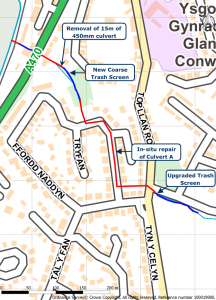Countless areas in the UK are designated ‘at risk to flooding’, including residential properties, commercial properties, agricultural land and infrastructure. Engineering, financial and social constraints prevent flood protection being provided in all these areas.
Where there is a high risk of flooding, Project Appraisal Reports (PAR) can be completed to establish the viability of flood mitigation measures at an early stage with a relatively small capital cost.
Time for WHS
WHS has ideal expertise for PARs:
- We have experts in flood hydrology, hydraulic modelling, river geomorphology and environmental assessments.
- Our team has been extensively involved with the development of current UK standards for flood estimation including the Flood Estimation Handbook (FEH) and associated software (required to establish hydrological inputs for flood modelling, to establish flood depths to estimate damage).
Our key to completing a good quality PAR is:
- Flooding mechanisms and estimated flood depths over a range of Annual Exceedance Probabilities (AEP) need to be roughly understood.
- Damage estimates (£) due to predicted flooding need to be fully understood. They also need to be estimated in line with the national guidelines, the Flood and Coastal Erosion Risk Management (FCERM) procedure, with help from the Multi Coloured Manual (MCM), which is an excellent source for damage estimates for a whole range of receptors.
- Cost estimates (£) associated with proposed mitigation measures need to be fully understood. They also need to be estimated to appropriate levels using specialist opinion and cost information for previous flood mitigation works.
 As an example, we completed a PAR to assess the flood risk in Glan Conwy, North Wales, at around 30 residential and commercial properties, as well as the A470, a major trunk road linking North and South Wales.
As an example, we completed a PAR to assess the flood risk in Glan Conwy, North Wales, at around 30 residential and commercial properties, as well as the A470, a major trunk road linking North and South Wales.
We developed a 1D/2D hydraulic model informed by topographic survey data, culvert CCTV survey data and analysis of the contributing catchment. This enabled us to predict flood depths over a range of return periods, and so derive Average Annual Damages (AAD) to use in our damage estimates.
We also produced a long list of mitigation measures. After considering the feasibility of each, we shortlisted options ranging from doing nothing to in-situ repair works.
We then completed a cost/benefit analysis using our damage estimates and cost estimates for the mitigation measures, and made recommendations for the one with the greatest cost/benefit ratio.
Result: Glan Conwy County Borough Council could complete recommended mitigation measures, safe in the knowledge that all other potential solutions had been explored.